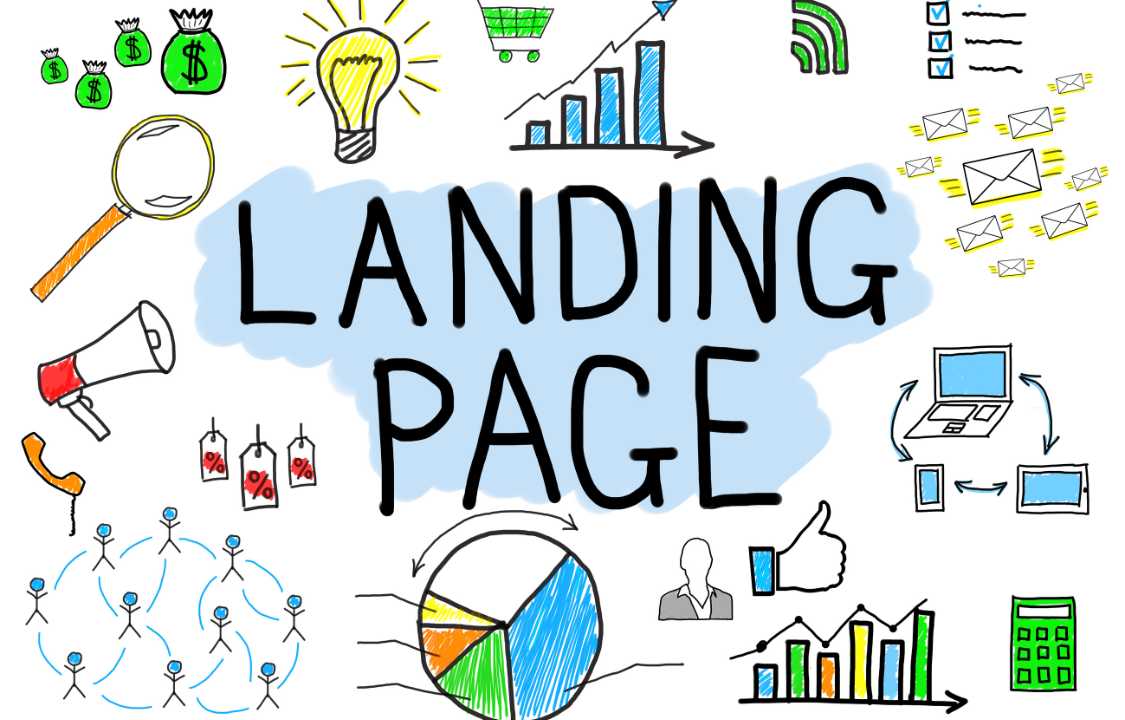Business
A Guide to Landing Page Optimization for Branding
Building a solid online identity for your brand is crucial in today’s competitive marketplace. A well-designed landing page can serve as a potent instrument for both conversion rate optimization and brand development/reinforcement. In this guide, we will explore the symbiotic relationship between landing page optimization and brand-building. We’ll go over the strategies, tactics, and best practices that will help you make landing pages that not only convert visitors but also leave a lasting image of your brand.
The Role of Landing Pages in Brand Building
Before we delve into optimization techniques, it’s crucial to understand the significance of landing pages in the brand-building process.
- First Impressions: Most of the time, your landing page is the first thing a person sees about your brand. It sets the tone for their perception of your business.
- Consistency: Landing pages should reflect your brand’s identity, including logo, colors, fonts, and messaging. Consistency across touchpoints builds trust.
- Relevance: Tailoring landing pages to specific campaigns and target audiences ensures that your brand message resonates effectively.
- Customer Experience: An optimized landing page provides a seamless and user-friendly experience, which enhances brand reputation.
Define Your Brand Identity
A strong brand identity is the foundation of successful brand building through landing page optimization. Consider the following steps:
- Brand Values: Clearly define your brand’s core values, mission, and vision. Your landing page should align with these principles.
- Brand Voice: Determine your brand’s tone and personality. Is it formal, casual, humorous, or professional? Your landing page copy should reflect this voice.
- Visual Identity: Create a style guide that outlines your brand’s visual elements, including colors, typography, and logo usage.
- Unique Selling Proposition (USP): Identify what sets your brand apart from competitors. Highlight your USP on your landing page.
Landing Page Optimization for Brand Building
Now, let’s explore the key strategies for optimizing your landing page to enhance brand building:
1. Consistent Branding
Ensure that your landing page reflects your brand’s visual identity consistently. This includes using the correct logo, color scheme, and typography. Consistency instills trust and makes your brand memorable.
2. Compelling Storytelling
Use your landing page to tell a tale about your brand that persuades. Use storytelling techniques to convey your brand’s values, mission, and vision. Engaging narratives resonate with visitors and create an emotional connection.
3. Persuasive Copywriting
Craft persuasive and brand-aligned copy on your landing page. Use your brand voice and messaging to communicate the benefits of your product or service. Highlight how it fulfills your brand’s promises.
4. Visual Appeal
Leverage high-quality images and graphics that align with your brand’s aesthetics. Visual elements should enhance the user experience and evoke the desired emotional response.
5. Mobile Optimization
Ensure that your landing page is mobile-responsive. A seamless mobile experience is crucial for brand perception, as many users access websites on smartphones and tablets.
6. User-Centered Design
Prioritize user-centered design principles, such as easy navigation, clear call-to-action buttons, and minimal distractions. A positive user experience reinforces your brand’s commitment to customer satisfaction.
7. Trust Signals
Incorporate trust-building elements like customer reviews, ratings, security badges, and endorsements. These signals enhance your brand’s credibility and reliability.
8. A/B Testing
Regularly conduct A/B tests to optimize landing page elements, including headlines, images, CTAs, and forms. Data-driven insights help refine your brand’s messaging and design.
Measuring Brand Building Success
To gauge the effectiveness of your landing page optimization efforts in brand building, monitor key performance indicators (KPIs) such as:
- Conversion Rate: Measure how many people who visit your landing page actually convert.
- Bounce Rate: Analyze the rate at which visitors leave your page without taking any action. A high bounce rate may indicate a lack of brand alignment.
- Click-Through Rate (CTR): Measure the percentage of visitors who click on your CTAs. A high CTR suggests effective branding and messaging.
- Brand Awareness: Assess brand awareness through surveys, social media mentions, and customer feedback. Positive brand mentions indicate successful brand building.
- Customer Feedback: Gather feedback and testimonials from customers who converted through your landing page. Analyze their comments for brand-related insights.
Iteration and Improvement
Brand building is an ongoing process. Continuously refine your landing page optimization strategies based on data and feedback. Experiment with new brand messaging, visual elements, and design to align with evolving market trends and customer preferences.
Conclusion
Building your brand through landing page optimization is a multifaceted endeavor that requires a deep understanding of your brand identity, audience, and optimization techniques. By consistently aligning your landing page with your brand values, leveraging persuasive storytelling and copywriting, and focusing on user-centered design, you can create landing pages that not only convert visitors but also leave a lasting brand impression. Remember that brand building is an ongoing journey, and optimization efforts should evolve alongside your brand’s growth and development.

